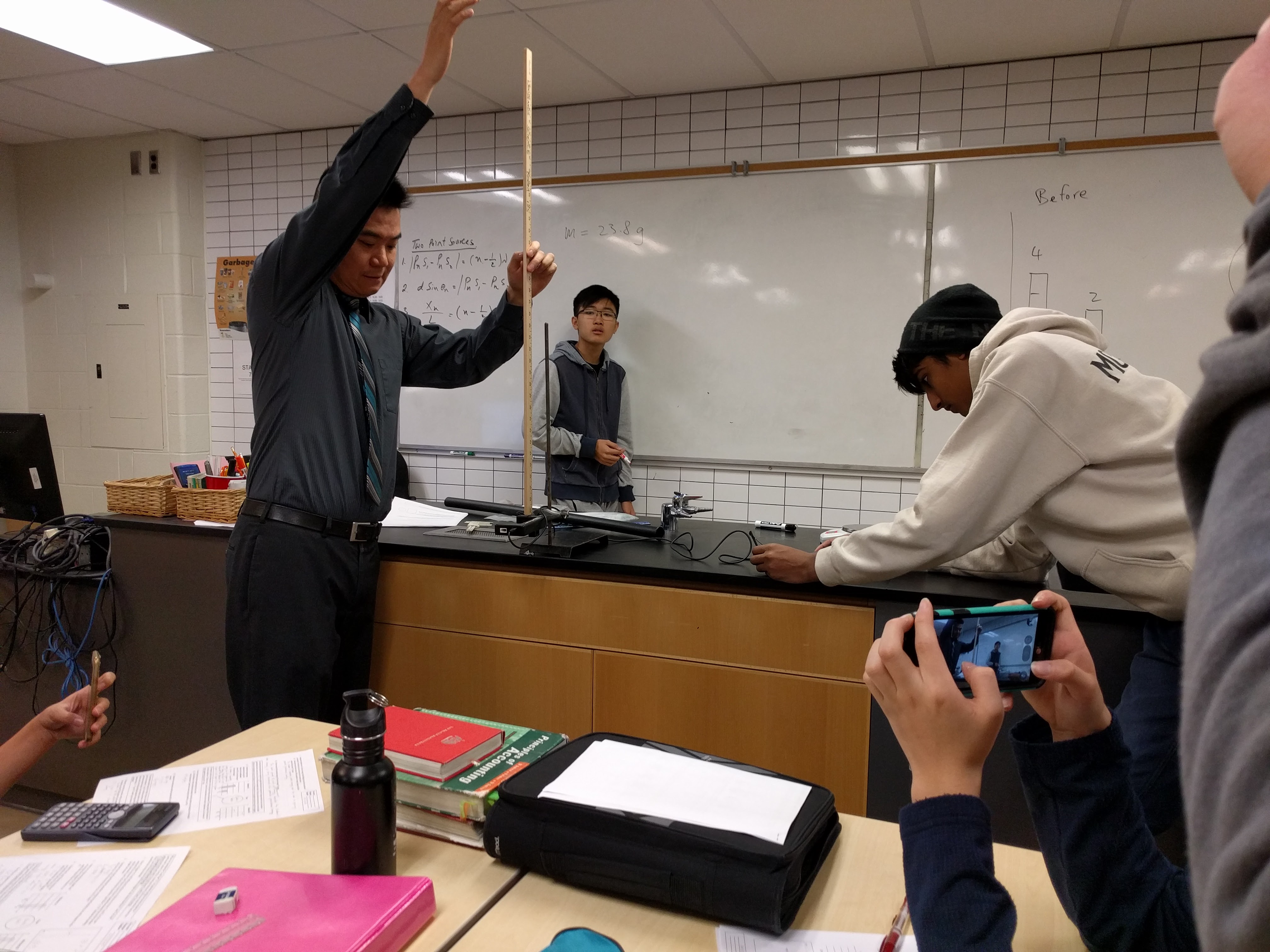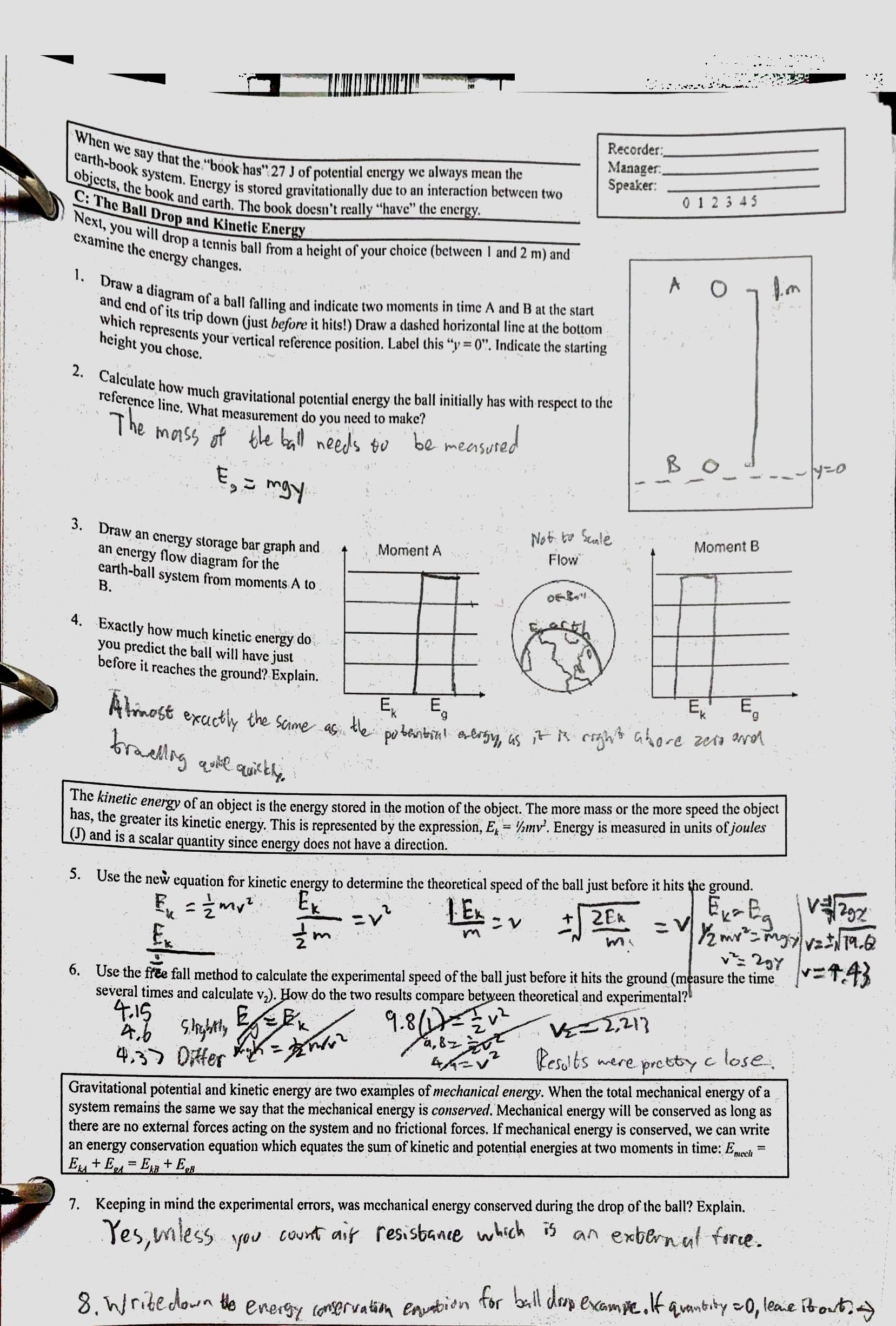Energy of a Ball Drop
Today we worked on a worksheet with our group, which involved dropping tennis balls and using a photo gate.
Today I learned:
When dropping a ball, the starting energy is always potential and right before the ball hits the ground the energy will always be kinetic.
To calculate for the final velocities, the mass of the object is not needed to determine the energy. Instead, when combining equations, the masses will cancel out. This proves again that objects fall at the same velcity, no matter their mass. Total energy after transformations is the same. Equations: potential: Eg = mgy, Ek = 1/2 mv^2 When they equate, as is in free fall, the m cancels out.


Using a photogate connected to a LabQuest, we can figure out where the instantaneous velocity of the ball.
Kinetic and gravitational potential energy are forms of mechanical energy. If total mechanical energy remains the same, mechanical energy is conserved. It will stay the same, unless external forces acton the system. Equation of conserved mechanical energy: Emech = Eka + Ega = Ekb + Egb. We can typically ignore air resistance for the purposes of these experiments.
Today I wondered:
Why is there a 1/2 in the Ek? How was that formula derived?
On earth, is it every possible for energy to be truly conserved? There will always be forces of friction and other external forces, so this is probably very unlikely.
Today I had an intriguing idea:
I wonder what the energy graphs would look like for a skydiver. At first it would probably be the same, but things would change after the parachute comes out. he kinetic energy is reduced, but I’m not sure if the gravitational potential energy would be reduced.
After Unit Reflection
This post connects to requirement #3, as it is a demonstration of the conversion between kinetic energy and gravitational potential energy. It also mostly demonstrates the law of conservation of energy. When the ball is dropped, it loses the energy it gained from going up so high, and the energy is transformed into kinetic motion so that the ball starts moving faster. The ball also loses virtually no energy, so it conserves mechanical energy which is a great example of the law of conservation of energy.
This post also connects to requirement #4. There are energy problems that are solved involving a ball and a drop, which have equations that can be used to calculate the final velocities and energies.